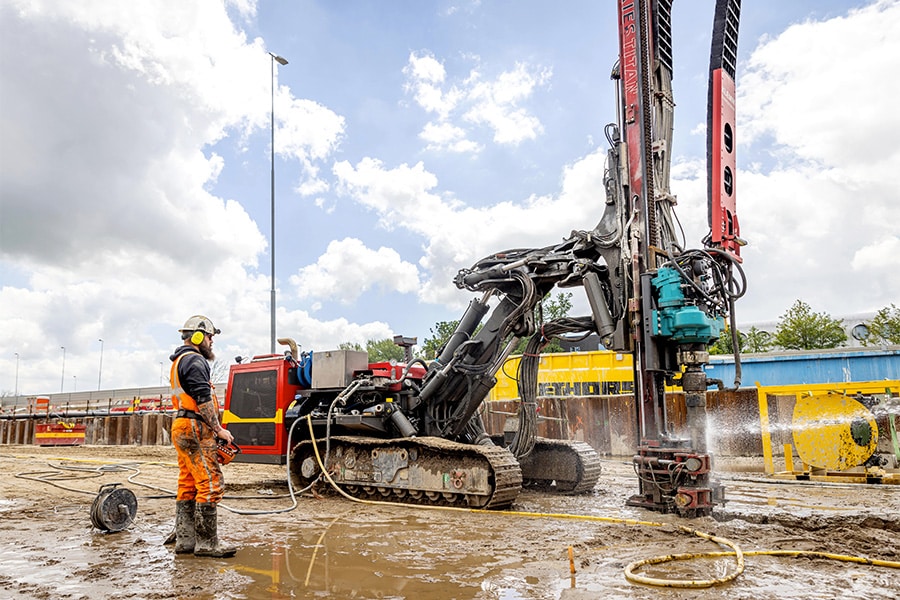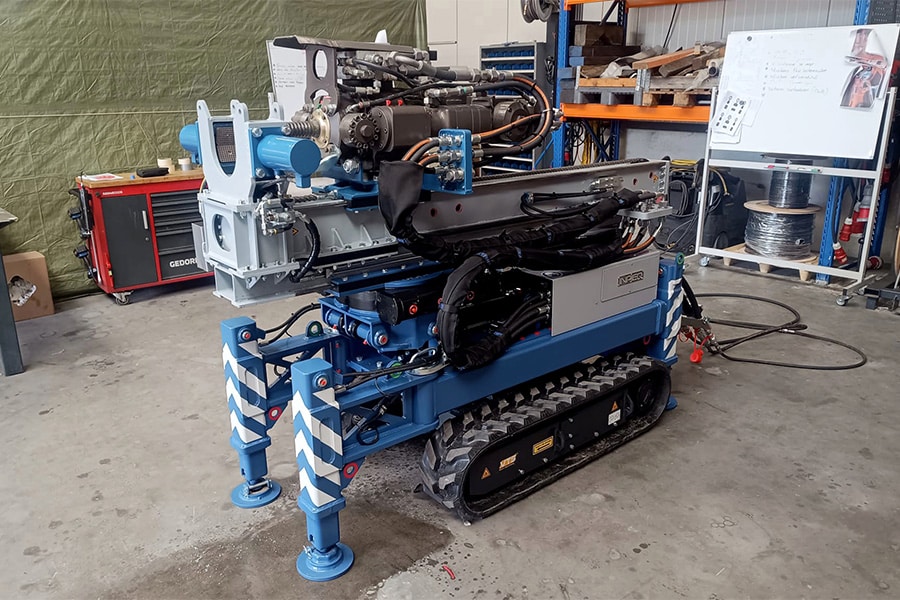
Here's why wood is the sustainable solution!
Why wood?
Wood has many properties that fit seamlessly with the ambitions, objectives and requirements of the government around climate, raw materials and waste policy, sustainable procurement policy (SPS), environmental policy (reduction of environmental impact) and the circular economy. Renewability, bio-based, reparability, reusability, recycling, sustainable origin, low environmental costs, low CO2-footprint, CO2-sink (storage), light weight, workability, prefabricability, detachability and the possibility of energy and heat recovery are characteristic; this, in addition to the excellent technical and aesthetic properties of this natural material. Applying more bio-based products, such as wood, directly fulfills several prevailing policy objectives.

Sustainably bio-based
Renewable materials from sustainably managed sources are very important for meeting circular goals. The fraction of building materials returned to construction (and civil engineering) after demolition is very limited, according to research. The potential to maximize reuse from existing construction is also limited in the future, according to the EIB (EIB, 2019). Wood and other renewable, sustainably managed bio-based products are thus necessary to complement the use of secondary recycled materials.
Wood is currently the most widely used bio-based material for civil engineering. Alternative materials are increasingly profiled as ''bio-based,'' while often the content of natural carbon in the product is unknown. Bio-based (composite) bridges regularly have only a deck of synthetic resin with an, unspecified, bio-based component. There is now a European standard (EN 16785) to determine whether composite products or chemical raw materials can claim the term ''bio-based,'' including an associated certification process to prevent ''greenwashing.'' Natural materials such as wood do not have to be certified.

Not for nothing more sustainable projects in wood
More and more clients are opting for wood. Province of Groningen recently realized, after a call for tenders on environmental costs and CO2-footprint, the Blue Runner, which includes the Pieter Smit Bridge. This 800-meter-long wood (and steel) pedestrian and bicycle bridge is the longest in Europe. The bridge has a design life of 80 years and is designed to be low maintenance. Municipality of Oirschot got its beautiful, iconic truss bridge over the Wilhelmina Canal in 2020 after some beginner's fear of wood among engineering firms. ProRail, too, seems converted. After the imposing wooden roof construction of Assen Station, Ede-Wageningen Station will also be enriched with a beautiful wood construction. At a later date, the design team of Rijkswaterstaat's Balgzand traffic bridge also introduced variants in wood, which proved to score better in terms of climate effect, use of materials and circularity than the traditional materialization.

How do I convince the client that wood is sustainable?
The timber industry is currently the only building material, and for more than 25 years, to have globally recognized certification systems that demonstrate and guarantee the sustainable origin of wood.
These systems safeguard the social values of biodiversity, landscape, water storage and rights of local people, among others. At the same time, together with the long-term use of wood in construction and civil engineering, these forests make an enormous contribution to reducing the greenhouse effect. The Dutch government has therefore drawn up special sustainable procurement requirements for this, which in turn are monitored by the Sustainable Timber Purchasing Committee (TPAC) (www.inkoopduurzaamhout.nl). Timber with an FSC, PEFC, Keurhout or STIP certificate can be shown to come from sustainably managed forests and is monitored from 'harvest to waterfront'. These certificates meet the Dutch government's sustainable procurement criteria (TPAC). In the Netherlands, ''sustainable wood'' is widely available. Currently, over 83% of all the wood imported already has these certificates and thus comes from sustainably managed forests. The suppliers who are members of the Dutch Association of Dutch Wood Companies even come to 93% demonstrably sustainable for their imports (Probos, 2021)

What about deforestation?
That concern is understandable, but unnecessary when it comes to using sustainably certified timber. Forests that are sustainably managed are maintained by certified timber sales and can resist investors in other land use applications. Forests especially in tropical areas that have not been brought under sustainable forest management are at high risk of destruction. This is because they yield no or insufficient cash. Agricultural crops such as soy, palm oil or cocoa yield much greater and faster profits: ''A forest that earns its own living, has a greater chance of survival.'' If we want forests in the tropics to be preserved and biodiversity to be maintained, it makes sense to use the sustainably produced wood from these forests. Because that provides the necessary income to carry out management, combat poaching and support local populations. So always purchase sustainably, always include in specifications and tenders that the wood must be certified and comply with TPAC. If Europe procured 100% of sustainably produced timber, it would have a positive impact on the conservation of 18 million hectares of forest and could contribute as much as 100 million tons of CO2- capture (Probos, 2020).

Lifespan of wood applications
The lifespan of a wood application depends primarily on design and detailing. By putting the proper attention and energy into this phase of the project, the most gains can be made over the life span (see chart 1). Where wood comes into long-term contact with soil and water, the choice of wood species or product is also decisive. As long as wood can dry quickly, the risk of deterioration is limited. Through clever and airy detailing, the life span of a wood application can be significantly extended. For example, research shows that the application of a deck board on a wooden sheet pile wall, for example, can easily extend the service life by an average of 20%, from an average of 36.6 years to 43 years (Timber Center, 2018).
Considerable gains can be made by mounting bridge decks differently on the substructure. After the summer, the CROW-CUR Handbook: Wood in Earth, Road and Hydraulic Engineering will appear, on sustainable design and detailing, with many examples of how to extend service life.

Wood species selection and longevity
The choice of wood species is mainly determined by the location and application, the associated risk class and the strength class required based on the design. For use with soil and water contact, wood species with high resistance to fungi, or natural durability class 1 or 2, are required. Wood species such as azobé, bilinga, okan, tali, massaranduba and angelim vermelho are well-known wood species in the gww, but there are also other lesser-known wood species (NEN 5493: 2010) and modified wood products (thermal or chemical) that meet this requirement. By including the desired durability class and strength class (performance requirements) in your specifications or contract, and not conveniently copying from an existing specification, the supplier can make an optimal proposal: the right wood in the right place. Performance-based prescribing is not only beneficial for pricing and security of supply, but also for the forest. Because the sustainably managed forest produces many more reliable types of wood than are currently prescribed. Specification texts can be found at
www.houtindegww.nl/technische-info/.
And the (lifetime) costs?
Until now, decisions around projects were mostly made on the basis of investment cost and risk, and follow-up costs such as maintenance were not routinely budgeted for. Environmental costs were also not taken into account. Fortunately, clients are increasingly taking total lifetime costs (Total Cost of Ownership) as the basis for decisions. Here, life span and environmental impact play an important role. In addition to comparisons of the TCO (or Life Cycle Costing (LCC) of bridges (RvO, 2013) and sheet pile walls (Centrum Hout, 2016), a study was recently commissioned by the Directorate-General for Public Works and Water Management as part of the MultiWaterWerk (MWW) project to examine the LCC of lock gates, with a view to more standardization in the future. Based on a reference task, tender clusters calculated the technical specification and associated lifetime costs over a design life of 100 years for lock gates in steel, wood and fiber-reinforced plastic (FRP).
The study shows that wooden lock gates have the most favorable environmental cost (EQI in €) (see Graph 2).
If we also take the decay into account, wooden lock gates score best for locks with a decay of up to a maximum of 7 meters, at clearances of 10 and 12.5 meters. Steel lock gates score slightly better with greater decay. Fiber-reinforced plastic (VVK) lock gates and hybrid lock gates score worst on this point (see graph 3a and b). Also on total lifetime cost (TCO), wooden lock gates score best over 100 years, despite interim replacement and maintenance (see graph 4).
Thinking along and writing guidance for wooden bridges?
Construction Campus, RWS, Timber Center and FSC Netherlands are working with dozens of municipalities, provinces, water boards and other chain partners to create a "Guide for Wooden Bridges" for clients. Participate or learn more: https://debouwcampus.nl/trajecten/hout-in-de-gww
Literature list is available on request from Center Wood



